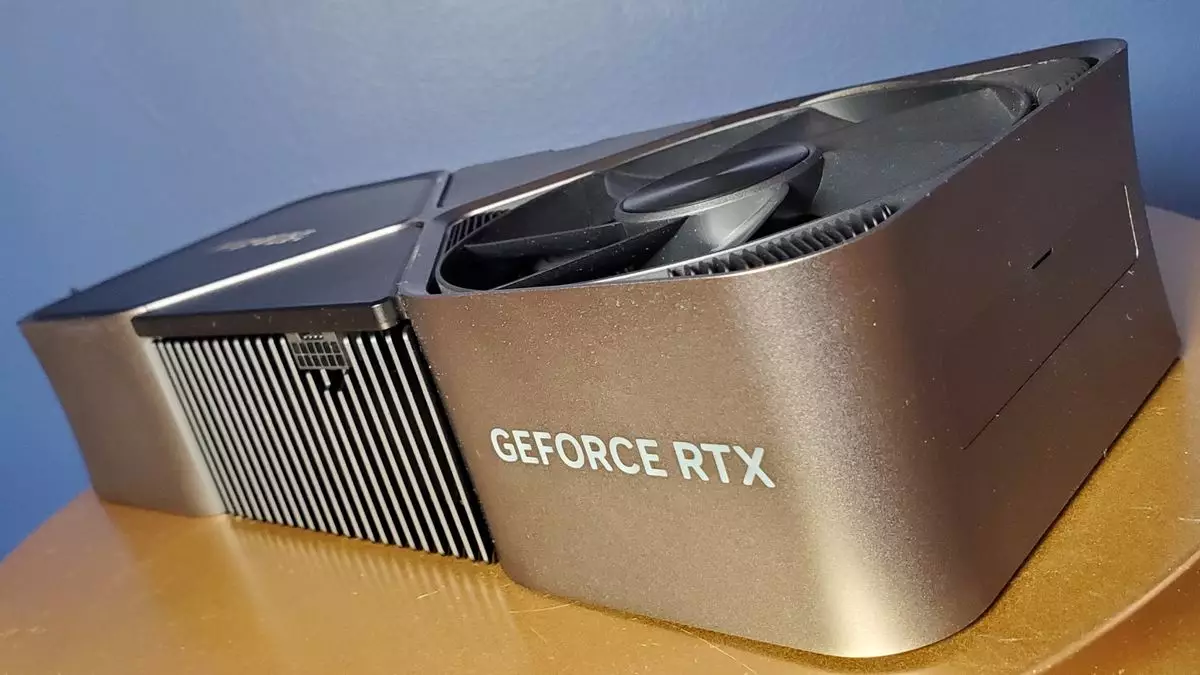The world of graphics processing units (GPUs) is undergoing an unparalleled transformation, characterized by an impressive yet concerning upward trend in power consumption. Nvidia, a leader in the industry, is gearing up for the launch of the RTX 5090, a graphics card rumored to push the envelope further than any of its predecessors. As we dive deep into what this means for enthusiasts and gamers alike, it becomes clear that the implications of these developments warrant thorough examination.
A key specification that often dominates discussions around GPUs is the Thermal Design Power (TDP), which indicates the maximum amount of power a GPU is expected to consume under load. The RTX 5090 is reportedly pegged at an astonishing 575 watts, marking a notable increase from the RTX 4090’s 450 watts. This leap of approximately 125 watts translates into an almost 30% rise in energy consumption, reflecting a trend not only towards more powerful graphics capabilities but also towards a demand for greater energy supplies.
The increase in TDP is not merely a number to be noted; it carries implications for users’ existing setups. With power requirements soaring, gamers will need to assess if their current power supplies can accommodate such demands. This situation begs the question: are we on the brink of an era where power supply upgrades become the norm rather than an exception?
Moreover, the increase in CUDA cores from 16,000 in the RTX 4090 to 21,600 in the forthcoming RTX 5090 hints at significant performance gains. Higher CUDA counts allow for more parallel processing, fundamentally boosting the card’s capabilities for tasks that demand robust computational power. However, these performance enhancements come hand in hand with the caveat of increased power consumption, thus requiring a careful balancing act from both Nvidia and its users.
While the metrics surrounding the RTX 5090 sound impressive, there are deeper implications for the average gamer. As high-end GPUs demand greater power, the need for higher-quality components throughout the gaming rig increases. From robust motherboards that can handle the electrical loads, ensuring stable connections to enhanced cooling systems that manage heat output, gaming hardware must adapt.
The evolution from GDDR6X to GDDR7 memory suggests an attempt by Nvidia to optimize efficiency within its designs. While GDDR7 may consume less power, the overall design of the RTX 5000 series will still feel the pressure of increased electricity consumption. This leads to the inevitable conclusion that future-proofing one’s gaming setup is essential, especially if one wishes to invest in the latest technology to ensure optimal performance and longevity.
Reflecting on the launch of the RTX 40 series, where multiple reports cited failure incidents linked to the new 12VHPWR connectors, we see a critical lesson being learned. Companies like Corsair are responding proactively, hinting at upgrades in their power supply offerings that coincide with the demands of next-generation GPUs. Corsair’s announcements indicate an understanding that gamers will require assurances of compatibility and stability with new hardware releases.
These announcements present a more serviceable message: not only must gamers be aware of power requirements, but manufacturers are also aware of the potential pitfalls. As the RTX 5090 nears its launch and preliminary specifications circulate, the cautious optimism surrounding its performance should be tempered with the understanding that an equally robust power infrastructure will be necessary.
The rise in power demands from graphics cards like the RTX 5090 may signify the end of an era of moderate power draws in gaming. As we see NVIDIA pushing technology boundaries, it is becoming apparent that the gaming community must also evolve in its approach. Investing in high-capacity, high-efficiency power supplies and keenly monitoring system compatibility could redefine the way we experience gaming.
The RTX 5090 and its siblings in the upcoming Nvidia lineup are set to alter not only our expectations in terms of performance but also the landscape of gaming rigs. Gamers and creators must familiarize themselves with the intricacies of power supply technology and prepare for an era that values power efficiency just as much as raw performance. The world of graphics cards is indeed undergoing a monumental shift, and adapting is the key to thriving in this new age.


Leave a Reply